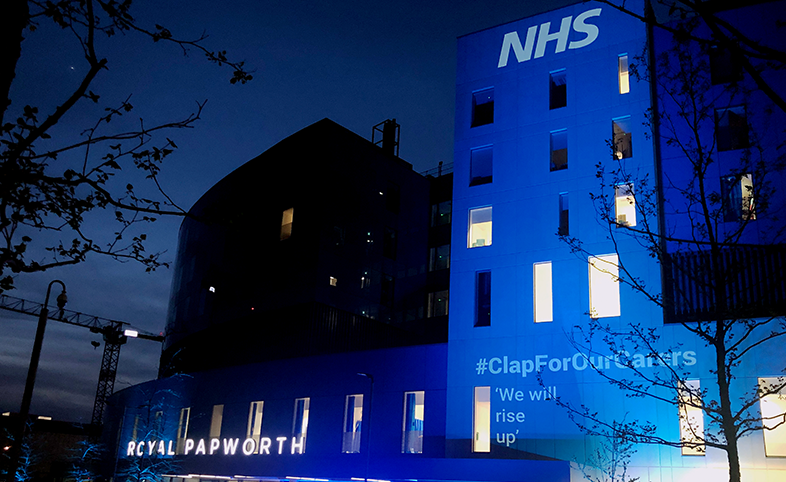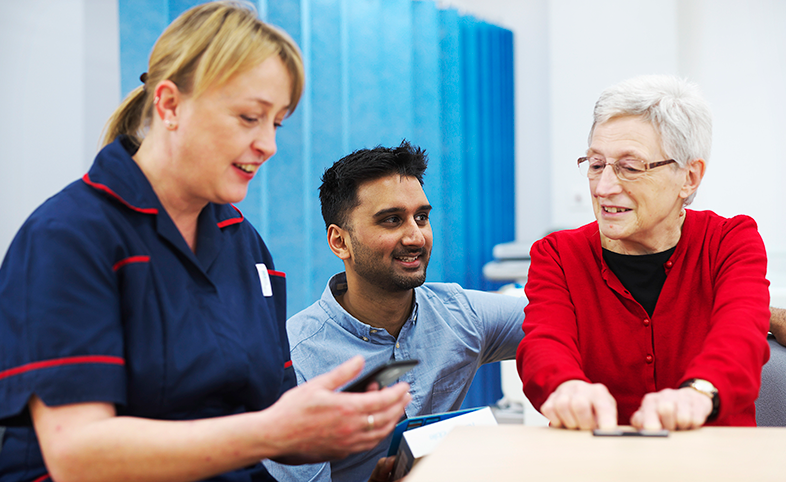Helen Oliver, Chief Operating Officer at Health Innovation East, shares some common themes from our region in response to the pandemic
In October we partnered with NHS England and NHS Improvement in the East of England to host an event which showcased some of the most notable innovations in health and care that were deployed in our region in response to Covid-19. We were particularly impressed by the range of new practices which supported those people considered to be most at risk during the pandemic. Whilst the innovations in the showcase covered varied challenges, some common themes were evident which we believe we can all learn from as we continue to confront an uncertain future together.
1.The health and care workforce has been more empowered to lead innovation
Whilst clinical input has always been vital in innovative practice, the pandemic saw clinicians even more empowered to drive innovations in their services and trusted to implement solutions which were right for their patients. The teledermatology service adopted by Ipswich and East Suffolk CCG was such an example from our showcase event, with GPs using technology to get an expert opinion faster whilst reducing unnecessary secondary care appointments.
As we collectively take stock and seek to distil which interventions have been most effective, which should be retained and which are no longer needed, we need to have a conversation about the right amount of procedure and regulation to ensure our services are safe and effective whilst balancing the need to build upon the momentum and willingness to address those service areas that need improvement differently and through the adoption of innovation.
2. There has been huge progress in delivering out of hospital care alternatives
A move towards delivering more services without the need to attend hospital has long been a priority for the NHS, but the pandemic has seen this accelerated across a number of specialties. An example is the musculoskeletal service from Cambridgeshire Community Services NHS Trust which rolled out virtual exercise and chronic pain classes and clinics.
For many services it will be appropriate to return to traditional clinical settings once it is safe to do so, but the pandemic has provided some excellent case studies for alternative ways of delivering care that may enable more people to take part without a need for face-to-face contact.
3. Patients have been open to receiving care in different ways
Change can often be difficult but despite the added stresses of lockdown, COVID-19 and economic uncertainty patients have shown a real openness to doing things differently. At our showcase event, staff from Norfolk County Council explained how they distributed assistive technology to high-risk groups and helped continue social care programmes throughout the first lockdown.
We don’t know if this shift in mindset is sustainable and we need to ensure that those with less well-developed digital skills still receive the best possible care and are not inadvertently excluded, but there are large numbers of patients who have hugely improved their digital literacy during the pandemic which presents an opportunity.
4. There has been a focus on everyone’s role in their own health
Self-care solutions have helped people to continue with rehab for long-term conditions and treat minor ailments. Of course there are many pathways for which self-care isn’t appropriate, but we have seen a number of services which had to change their delivery model now harnessing this patient empowerment by building it into care plans alongside traditional treatment, such as the cardiac rehabilitation service at Addenbrooke’s Hospital.
Time will tell the extent to which lower attendance in general practice or emergency departments during the pandemic represents a reduction in unnecessary appointments or whether people have been unable or hesitant to get the healthcare support they need. It may be a combination of the two, but a public conversation about how we can better support people to have a more active role in their own health may go a long way in alleviating capacity as we manage waiting lists going forward.
5. Coronavirus has put a spotlight on health inequalities
As innovation has helped meet the pandemic challenge it has also highlighted the impact of health inequalities on patient outcomes. Digital exclusion, mental health, learning disabilities, ethnicity, language barriers, homelessness, restricted access to community support and resources are all factors that have put some individuals at a higher risk of poorer health due to the pandemic.
The COVID Protect programme from Norfolk and Waveney CCG identified those most at risk at the start of the pandemic and proactively engaged those groups with an integrated care and support service to ensure the support they needed was delivered safely. The programme is a brilliant example of agencies working together and shows a great opportunity to build on newly strengthened relationships between health, social care and third sector organisations to address health inequalities.
The Health Foundation has launched an inquiry into the pandemic’s implications for health and health inequalities, but there is already a recognition that the evaluation of programmes has to include assessment of how innovation can help address, alleviate or account for health inequalities.
What lies ahead?
As we come to the end of 2020 and look to the new year we can already see how innovation has improved our ability to manage our response to the pandemic. There is heartening progress on a vaccine and, now that we are in the second wave of the virus, many providers are better positioned to keep non-Covid services open.
Looking back, we can be heartened by the way that healthcare providers have innovated in the face of adversity and transformed the way they deliver care. The crisis has unleashed an extraordinary burst of ingenuity from our talented professionals, achieving in months some things which we might otherwise have taken years to achieve. This said, we are also acutely aware of the huge toll that the pandemic has taken on the wellbeing of our workforce and our communities and so resilience should be a priority focus for innovations as we move forward.
Our showcase event in partnership with NHS England and NHS Improvement was an important step forward in sharing inspiring stories of tenacity in the face of adversity. The more we share stories like this the more likely we are to embed a culture of innovation across our services and in turn continue to improve the care that we deliver to our citizens.
About Helen
Helen Oliver is the chief operating officer and deputy chief executive for Health Innovation East. She is responsible for overseeing our company’s operational processes, including corporate functions, and leading the development of business strategies and reporting. She also leads on the NHS England Test Bed programme on behalf of the AHSN Network.
Find out more…

Read more about the East of England regional innovation and transformation showcase here.
Share your idea
Do you have a great idea that could deliver meaningful change in the real world?
Get involved
